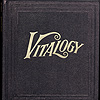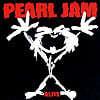XLR mic connectors

MissYouAllDay
Posts: 939
I/O Configuration:
2 - 1/4" Analog Inputs and Outputs
Optical 24-bit/96kHz S/PDIF In/Out (switchable to AES/EBU)
Coaxial 24-bit/96kHz S/PDIF In/Out (switchable to AES/EBU)
MIDI In/Out
This is the IO config for a recording soundcard. Notice no mention about XLR connectors. SInce I don't know anything about Mics it could just be that XLR is the standard and you assume every type of recording device has them, but in that case can someone tell me what part of the above description includes XLR connectivity so I can tell in the future?
Here is the one for the Mbox:
Two analog audio inputs with Focusrite microphone
preamps and switchable 48V phantom
power
• Analog input jacks that accept both XLR and
1/4-inch (TRS) connectors, and are switchable
between Mic, Line, and Instrument levels
• Two channels of S/PDIF digital input and output
see here they say that there are analog input jakcs that accept both XLR and 1/4 inch. But how do XLR and 1/4 inch fit into the same hole? They look like they are shaped really differently.
So whats up with this?
2 - 1/4" Analog Inputs and Outputs
Optical 24-bit/96kHz S/PDIF In/Out (switchable to AES/EBU)
Coaxial 24-bit/96kHz S/PDIF In/Out (switchable to AES/EBU)
MIDI In/Out
This is the IO config for a recording soundcard. Notice no mention about XLR connectors. SInce I don't know anything about Mics it could just be that XLR is the standard and you assume every type of recording device has them, but in that case can someone tell me what part of the above description includes XLR connectivity so I can tell in the future?
Here is the one for the Mbox:
Two analog audio inputs with Focusrite microphone
preamps and switchable 48V phantom
power
• Analog input jacks that accept both XLR and
1/4-inch (TRS) connectors, and are switchable
between Mic, Line, and Instrument levels
• Two channels of S/PDIF digital input and output
see here they say that there are analog input jakcs that accept both XLR and 1/4 inch. But how do XLR and 1/4 inch fit into the same hole? They look like they are shaped really differently.
So whats up with this?
I miss you already, I miss you always
I miss you already, I miss you all day
I miss you already, I miss you all day
Post edited by Unknown User on
0
Comments
-
MissYouAllDay wrote:I/O Configuration:
2 - 1/4" Analog Inputs and Outputs
Optical 24-bit/96kHz S/PDIF In/Out (switchable to AES/EBU)
Coaxial 24-bit/96kHz S/PDIF In/Out (switchable to AES/EBU)
MIDI In/Out
This is the IO config for a recording soundcard. Notice no mention about XLR connectors. SInce I don't know anything about Mics it could just be that XLR is the standard and you assume every type of recording device has them, but in that case can someone tell me what part of the above description includes XLR connectivity so I can tell in the future?
Here is the one for the Mbox:
Two analog audio inputs with Focusrite microphone
preamps and switchable 48V phantom
power
• Analog input jacks that accept both XLR and
1/4-inch (TRS) connectors, and are switchable
between Mic, Line, and Instrument levels
• Two channels of S/PDIF digital input and output
see here they say that there are analog input jakcs that accept both XLR and 1/4 inch. But how do XLR and 1/4 inch fit into the same hole? They look like they are shaped really differently.
So whats up with this?
XLR's are the three prong holes of Low Z mic connectors. 1/4 inch is the one on your guitar and amp.
1/4 inch jacks are Hi Z. You can use adaptors of course but LOW Z is the preferred connectivity for microphones and other devices. If you look at the back of many line 6 amps for example they will have DI stereo XLR outs for connectivity to the board.
Low Z (esp focusrite a high quality brand of connection and preamp) is the preferred method of connectivity for microphones especially.
Guitars are Hi Z 1/4 inch.
MIG can tell you the definitions of what I'm talking about and why.
Or you can google XLR defintion.
There are not many internal soundcards if any at all with XLR inputs because they are larger, If you look up the Digi 02 for instance from digidesign, it has 4 XLR in's I believe.
Sometimes it's described as (Microphone/Instrument) because most mic's are Low Z XLR and most instruments are HI Z 1/4 inch.My Girlfriend said to me..."How many guitars do you need?" and I replied...."How many pairs of shoes do you need?" She got really quiet.0 -
K but in the examples I gave, ones the Mbox and ones an EMU card so they both pretty much have to have XLR ports. What would they be included under with that first I/O description I gave? That is the description of an E-MU card by the way.I miss you already, I miss you always
I miss you already, I miss you all day0 -
MissYouAllDay wrote:K but in the examples I gave, ones the Mbox and ones an EMU card so they both pretty much have to have XLR ports. What would they be included under with that first I/O description I gave? That is the description of an E-MU card by the way.
The E-MU 1212 has no XLR connectivity that I see. You will need to use a lowZ to High Z adaptor to plug in most microphones.My Girlfriend said to me..."How many guitars do you need?" and I replied...."How many pairs of shoes do you need?" She got really quiet.0 -
Wow, Don't you think that is total shit? A recording card with no XLR connectivity?
I am sure the 1820 and 1820m have them in that box they come with that sits on your computer.I miss you already, I miss you always
I miss you already, I miss you all day0 -
The bigger problem with the E-Mu card is that it doesn't have a mic preamp. Even if you convert the cable to 1/4", you still won't get a great sound. Soundcards like that will only work well if you use an external preamp or mixer to get the mic signal to 1/4" line level.
The MBox, on the other hand, is made to be an all-in-one box, not just an interface.
Be careful, a lot of digital gear is more about A/D conversion than being a studio in a box.
Oh, and there are connectors out there that will accept both XLR and 1/4" cables. They look a little funny, but the 1/4" connector is right in the center of the XLR connector. And TRS is a balanced OR stereo 1/4". TRS stands for "tip-ring-sleeve", which is the three connectors for the three-conductor cable (a normal 1/4" cable has just tip and sleeve, for a two-conductor cable, and is occasionally referred to as "TS"). And one last definition: Low-Z is low impedance, and hi-Z is high impedance. Carryover from the days where typewriters didn't have an omega symbol....and if you don't like it, you can suck on an egg.0
Categories
- All Categories
- 149.1K Pearl Jam's Music and Activism
- 110.2K The Porch
- 283 Vitalogy
- 35.1K Given To Fly (live)
- 3.5K Words and Music...Communication
- 39.3K Flea Market
- 39.3K Lost Dogs
- 58.7K Not Pearl Jam's Music
- 10.6K Musicians and Gearheads
- 29.1K Other Music
- 17.8K Poetry, Prose, Music & Art
- 1.1K The Art Wall
- 56.8K Non-Pearl Jam Discussion
- 22.2K A Moving Train
- 31.7K All Encompassing Trip
- 2.9K Technical Stuff and Help

